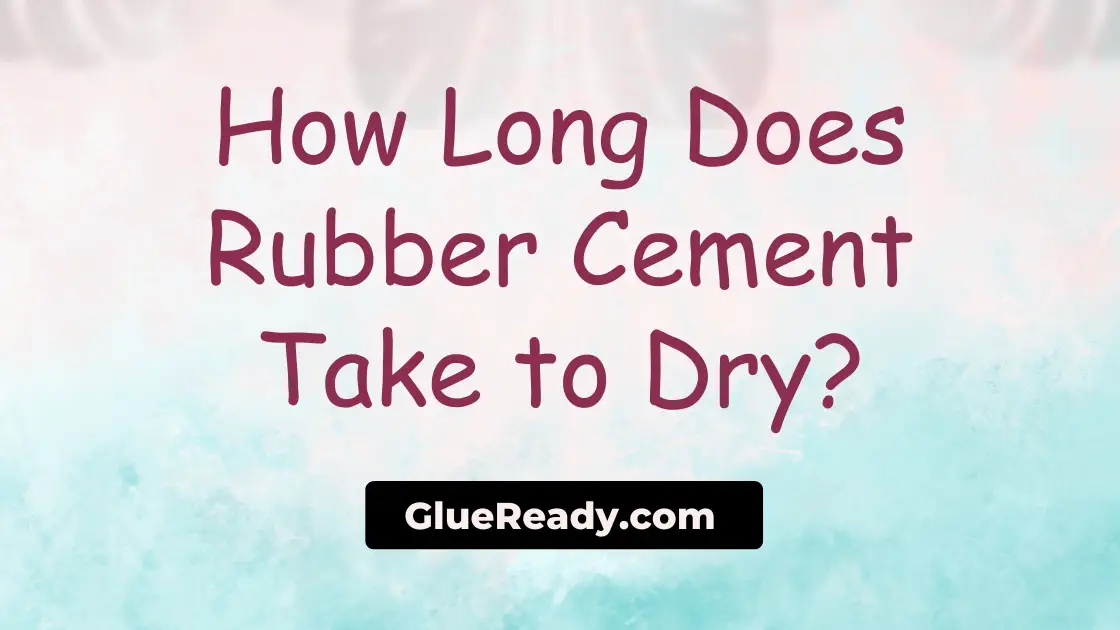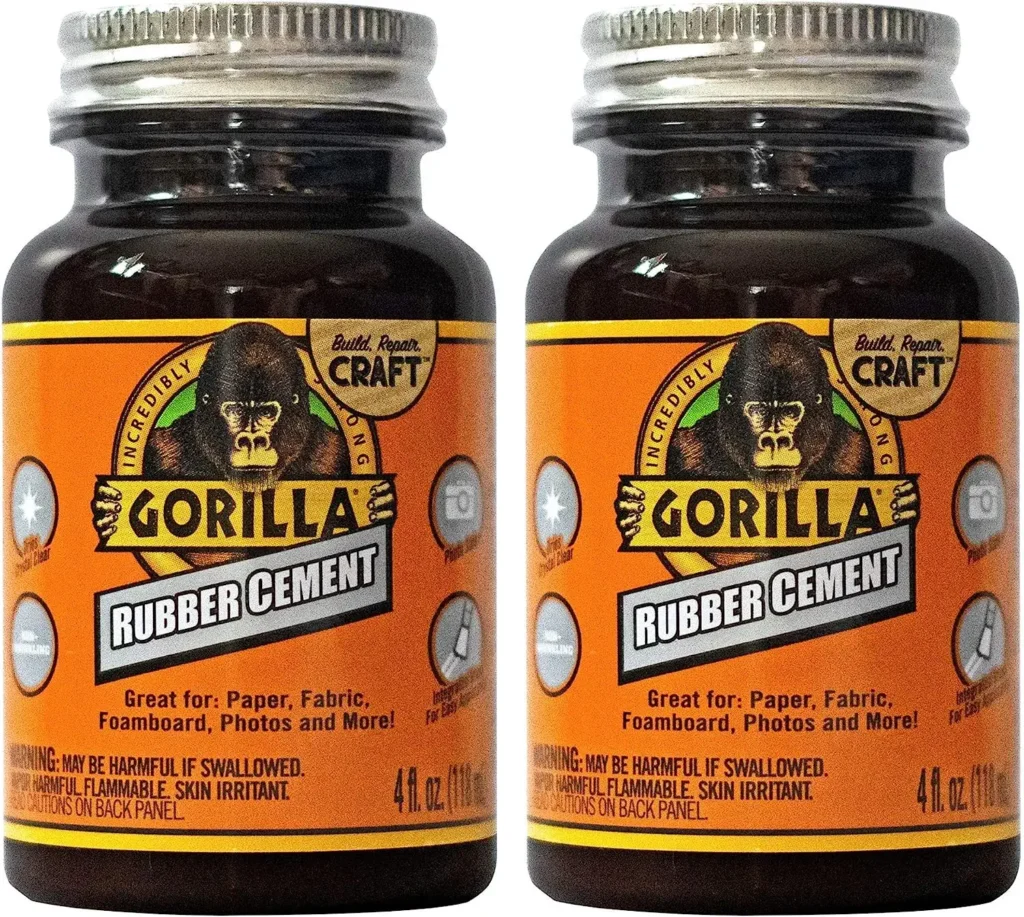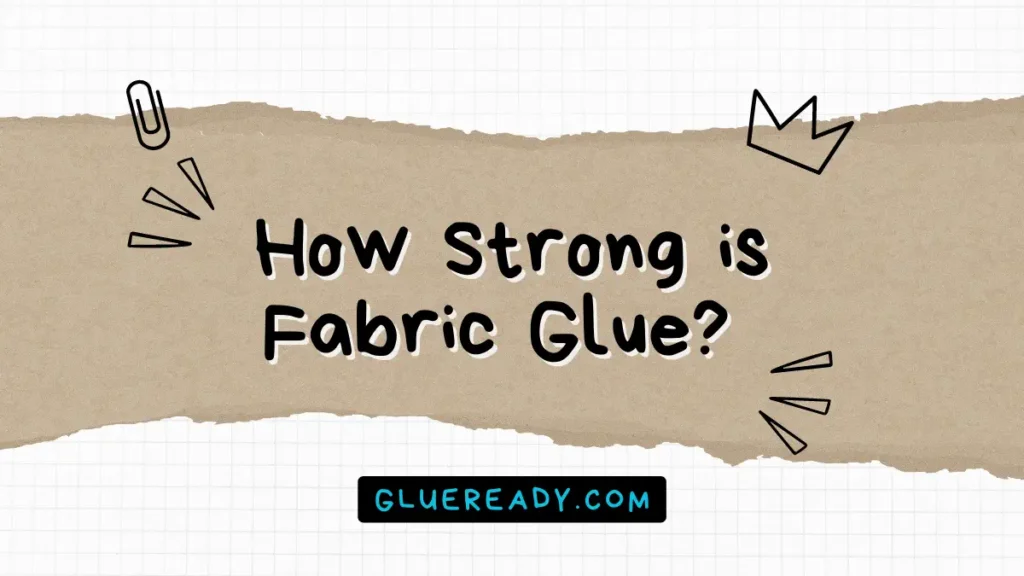How Long Does Rubber Cement Take to Dry?

Rubber cement is a popular and versatile adhesive that can be used for various crafts and home repairs.
It is made from natural unvulcanized rubber mixed with solvents such as heptane, toluene, hexane, or acetone.
Rubber cement can bond to almost any surface and can create either a permanent or a temporary glue depending on how it is applied. But how long does rubber cement take to dry?
In this article, we will answer this question and provide some tips on how to dry rubber cement effectively.
Read More: How To Use Rubber Cement?
Understanding Rubber Cement
Rubber cement is a type of adhesive made from a mixture of natural or synthetic rubber and a solvent.
The solvent, often a flammable liquid like heptane or hexane, is used to keep the rubber in a liquid state and evaporates during the drying process.
As the solvent evaporates, the rubber molecules bond, creating a secure and flexible adhesive.

How Long Does Rubber Cement Take to Dry?
The drying time of rubber cement depends on the thickness of the application and the environmental conditions.
If you put on a thin layer of rubber cement, it’ll dry within two to five minutes, while if you put on a thick layer, it’ll take 15 minutes or longer to dry.
However, the drying time can also be affected by the temperature, humidity, and air circulation of the area where the glue is applied.
For example, rubber cement will dry faster in a warm, dry, and well-ventilated place than in a cold, damp, and poorly-ventilated one.
To check if the rubber cement is dry, you can gently touch the glue surface with your finger.
If it feels tacky or sticky, it means that it is still wet and needs more time to dry. If it feels smooth and dry, it means that it is ready to be used.
Factors Affecting Drying Time of Rubber Cement
Here are some important factors that can affect the drying time of rubber cement:
Humidity
High humidity levels can slow down the evaporation of the solvent, prolonging the drying time. Conversely, low humidity facilitates faster evaporation and speeds up the drying process.
Temperature
Higher temperatures generally accelerate the drying time, as the solvent evaporates more quickly in warm conditions. On the other hand, cooler temperatures can delay the drying process.
Layer Thickness
Thicker layers of rubber cement will take longer to dry compared to thinner, more evenly applied coats. It is recommended to apply thin, even layers for faster drying times.
Type of Rubber Cement
Different brands and formulations of rubber cement may have varying drying times. Always refer to the manufacturer’s guidelines for specific drying time recommendations.
Tips for Optimal Drying of Rubber Cement
Here are some tips to get optimal drying of rubber cement:
Work in a well-ventilated area
Rubber cement contains volatile solvents that can emit fumes during the drying process. Ensure proper ventilation to avoid inhalation of these fumes.
Apply in thin layers
For faster drying, apply rubber cement in thin, even layers. This not only reduces drying time but also improves the overall effectiveness of the adhesive.
Use a drying aid
In situations where quick drying is crucial, consider using a drying aid specifically designed for rubber cement. These aids help speed up the evaporation process, reducing the waiting time.
Avoid disturbance during drying
To achieve a strong bond, refrain from moving or adjusting the adhered materials until the rubber cement has fully dried.
Read More: Barge Cement vs Rubber Cement
How to Remove Rubber Cement?
Another benefit of rubber cement is that it is water-soluble and can be easily removed for reapplication or cleaning.
To remove rubber cement from a surface, you can use a rubber eraser, a cloth dampened with water or rubbing alcohol, or your fingers.
Simply rub the glue gently until it rolls off or peels off from the surface. Be careful not to scratch or damage the surface while removing the glue.
To remove rubber cement from your skin, you can wash your hands with soap and water or use a hand sanitizer.
To remove rubber cement from your clothes, you can soak the stained area in warm water with detergent for 15 minutes and then wash it as usual.
To remove rubber cement from your hair, you can use vegetable oil or baby oil to loosen the glue and then shampoo your hair thoroughly.
Frequently Asked Questions (FAQs)
Is Rubber Cement Waterproof?
Rubber cement provides moderate water resistance, but it is not waterproof. A certain amount of water can be absorbed on its surface for a short period of time.
Due to rubber cement’s water-soluble nature, it may keep two surfaces intact for a while, but it won’t last forever.
Does Rubber Cement Evaporate?
Yes, rubber cement evaporates. In rubber cement, solid rubber is mixed with a volatile solvent that dissolves it. Rubber becomes the adhesive when the solvent evaporates after the cement is applied.
Final Thoughts
You can do the job conveniently and mess-free with rubber cement. It dries within 15 minutes and will stick surfaces together for a long time.
However, there are many factors that can affect its drying time and performance, such as the type of rubber cement, the amount applied, the surfaces involved, and the environmental conditions.
By following the instructions on the bottle and considering these factors, you can use rubber cement effectively for your projects.






